Today, I’m sharing the Best 10 Korean Jjigae you need to try.
If you only know Kimchi Jjigae, you’re missing out—there are so many more delicious Korean stews worth discovering. Plus, I’ll share some easy jjigae recipes you can make at home, so don’t miss this blog post!
Table of Contents
What is Jjigae? 찌개
Jjigae is different from guk. While guk has a lot of broth and fewer ingredients and is usually enjoyed mainly for its soup, jjigae is thicker, saltier, and packed with hearty fillings. You typically scoop out the broth and chunks together. In Western terms, jjigae is like a stew and guk is like a soup.
Curious about guk, too? Check out my post on the 10 Must-Try Korean Guk (Soups) for more delicious ideas!
10 Must-Try Jjigae (Korean Stew)
Today, I’m sharing 10 authentic Korean Jjigae you absolutely need to try. Which one will become your new favorite?
Kimchi Jjigae (김치찌개)
Kimchi jjigae is probably the most well-known Korean stew in the world, and for good reason. It’s a staple in Korean households and a beloved comfort food.
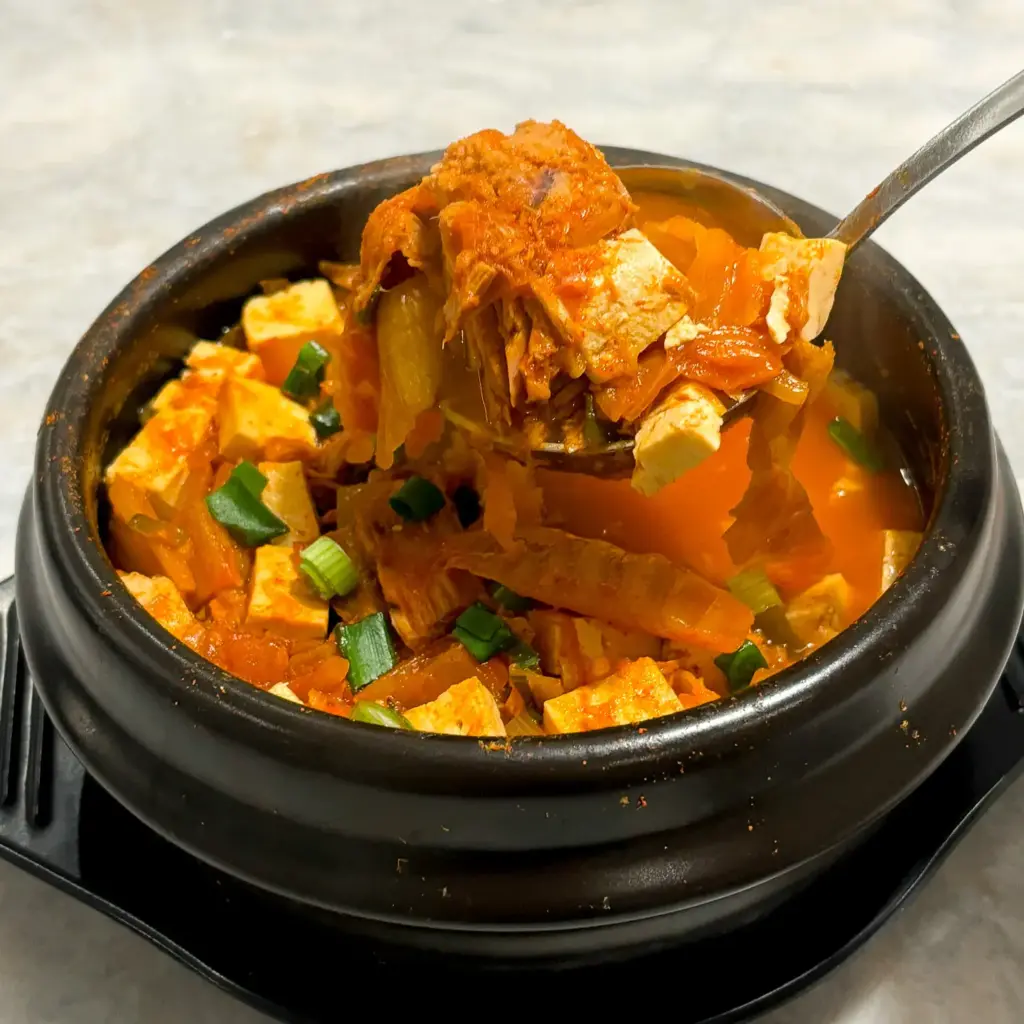
- Ingredients
It usually starts with napa cabbage kimchi, but if there are leftovers, radish kimchi (kkakdugi) or young radish kimchi (chonggak kimchi) may be used instead. To add protein, people often include pork, canned tuna, or processed meats such as Spam or sausages. Some even use oily fish, such as mackerel or saury.
The aged kimchi tenderizes the meat and removes any fishy smell, bringing everything together beautifully.
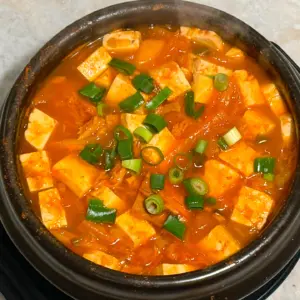
This version is made with canned tuna, which is not only super simple but also one of the cheapest ways to enjoy kimchi stew. Unlike the rich and heavy pork version, tuna kimchi stew has a cleaner, lighter taste—yet it’s still full of deep flavor. Follow my recipe and you’ll taste that authentic Korean flavor you remember—or maybe even better, I dare say.
After coming back from an overseas trip, many Koreans crave Korean food again, especially kimchi stew.
There’s something about the spicy red broth that resets the palate. That’s why, as a joke, Koreans sometimes call this kind of meal the “Korean exorcism ritual” after a trip abroad haha.
Budae Jjigae (부대찌개)
You might already be familiar with budae jjigae, also known as Korean Army Stew. It’s one of the most beloved Korean comfort foods and is especially enjoyed in groups, whether for a casual office lunch or a fun night out with friends over drinks.
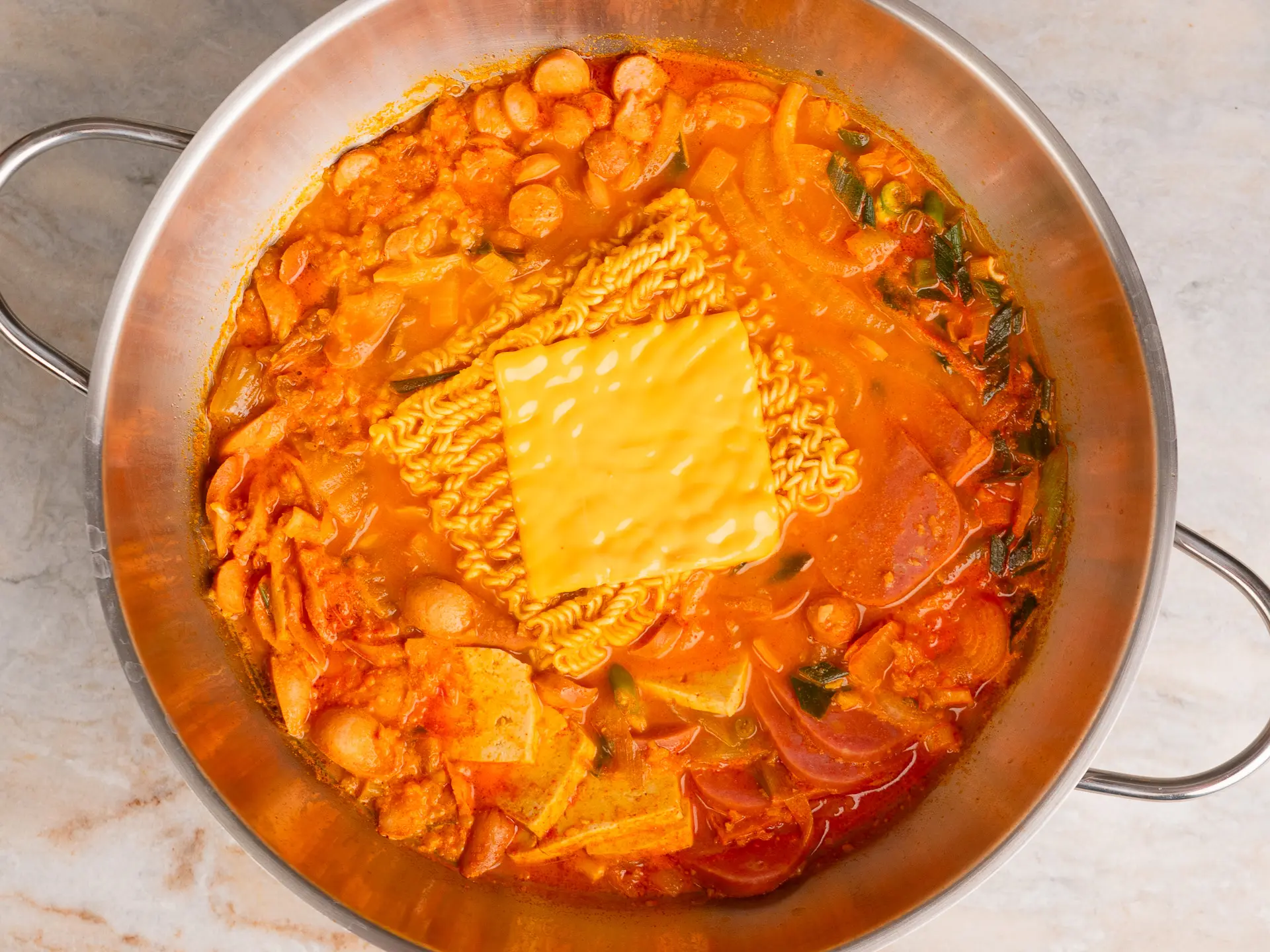
- History
This stew originated in the 1950s, right after the Korean War. Koreans began making it near U.S. Army bases where they could find surplus ingredients like Spam, sausages, and canned goods. They combined these with kimchi and local flavors, creating budae jjigae. Cities near bases like Uijeongbu and Songtan are known for their original versions of this dish.
- Ingredients
It usually includes kimchi, Spam or canned ham, and frank sausages. Baked beans are often added, too. A slice of American cheese is a common topping, as are instant ramyun noodles—though the latter are more of an added bonus than the main course. Koreans almost always eat it with rice.
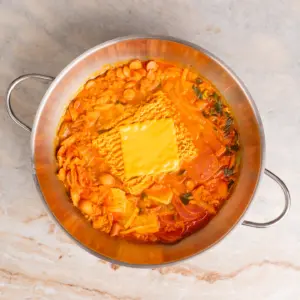
The salty, savory ham adds richness and umami, while the kimchi and gochujang (Korean red pepper paste) cut through the greasiness and bring all the flavors together. It’s the kind of dish where you keep going back for another bite. It’s bold, spicy, and hearty—and the perfect drinking food, too.
Doenjang Jjigae (된장찌개)
This is Korea’s go-to comfort food, made with doenjang, a fermented soybean paste (Doenjang). Thanks to a base of vegetable or meat broth mixed with fermented goodness, it’s salty, earthy, and deeply flavorful. Doenjang is one of Korea’s most iconic fermented foods and is loved for being nutritious and gut-friendly.
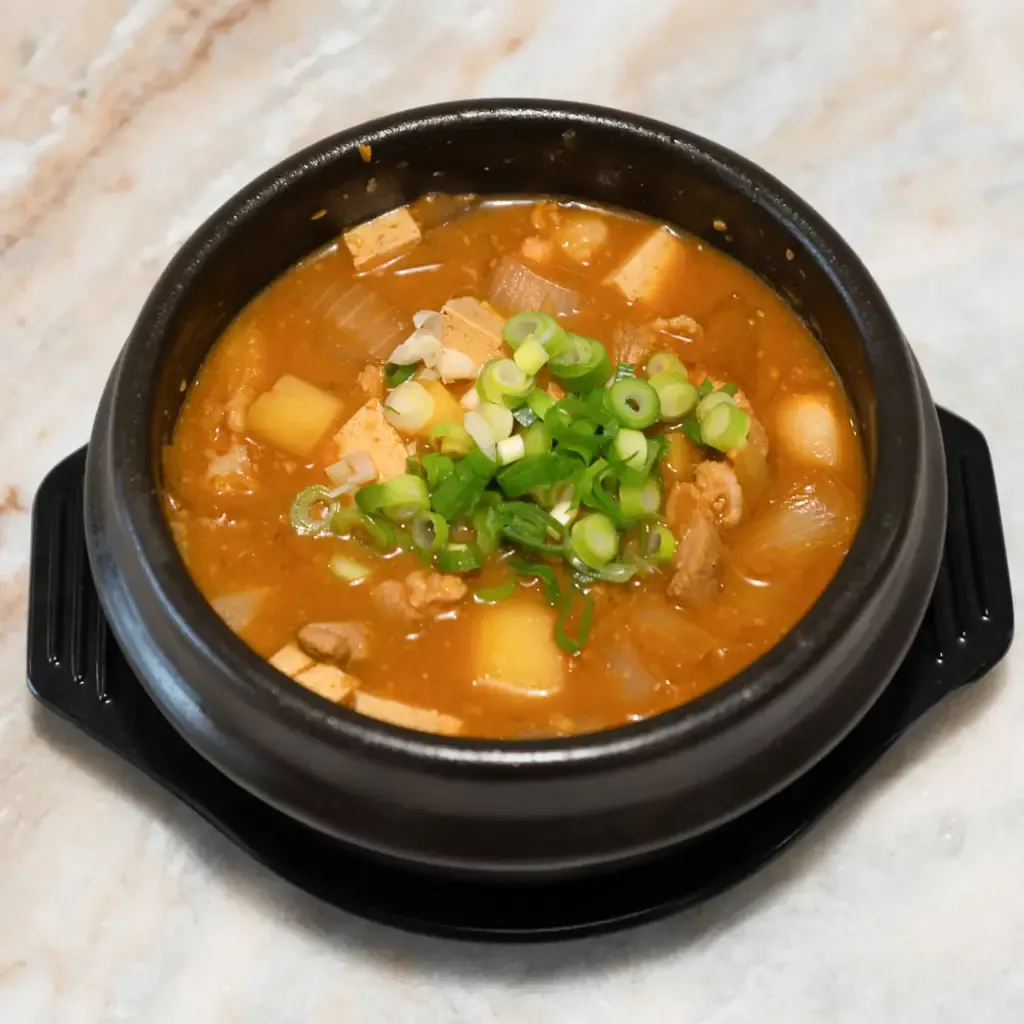
- Ingredients
The stew starts with doenjang, and is simmered with aromatic veggies like green onion, garlic, onion, and zucchini. Tofu and potatoes make it hearty, while mushrooms like enoki or shiitake add a nice texture.
Some people make it with just veggies, but many like to boost the flavor with pork belly or clams, which give a deeper, richer taste—either meaty or light and briny.
- Pro Tip
At Korean restaurants, you might notice it has a slightly spicy kick. That’s because they often mix in a spoon of gochujang (Korean red chili paste) or ssamjang (a seasoned soybean paste).
If you’re cooking at home and feel like something’s missing, try adding some gochujang or ssamjang—it’ll give your dish that restaurant-style flavor. You can also toss in a few spicy Korean chilies, such as Cheongyang gochu(pepper), to add heat.
- When to Eat
Doenjang jjigae is mild enough to eat for breakfast and also commonly served with Korean BBQ—it balances the rich grilled meat perfectly. That’s why you’ll often find it on the side at Korean BBQ restaurants.
Gochujang Jjigae (고추장찌개)
This bold, flavorful Korean stew is made with gochujang, a Korean red chili paste, as the main base. If you’re familiar with doenjang stew, picture a spicier, sweeter version with chili paste instead of soybean paste.
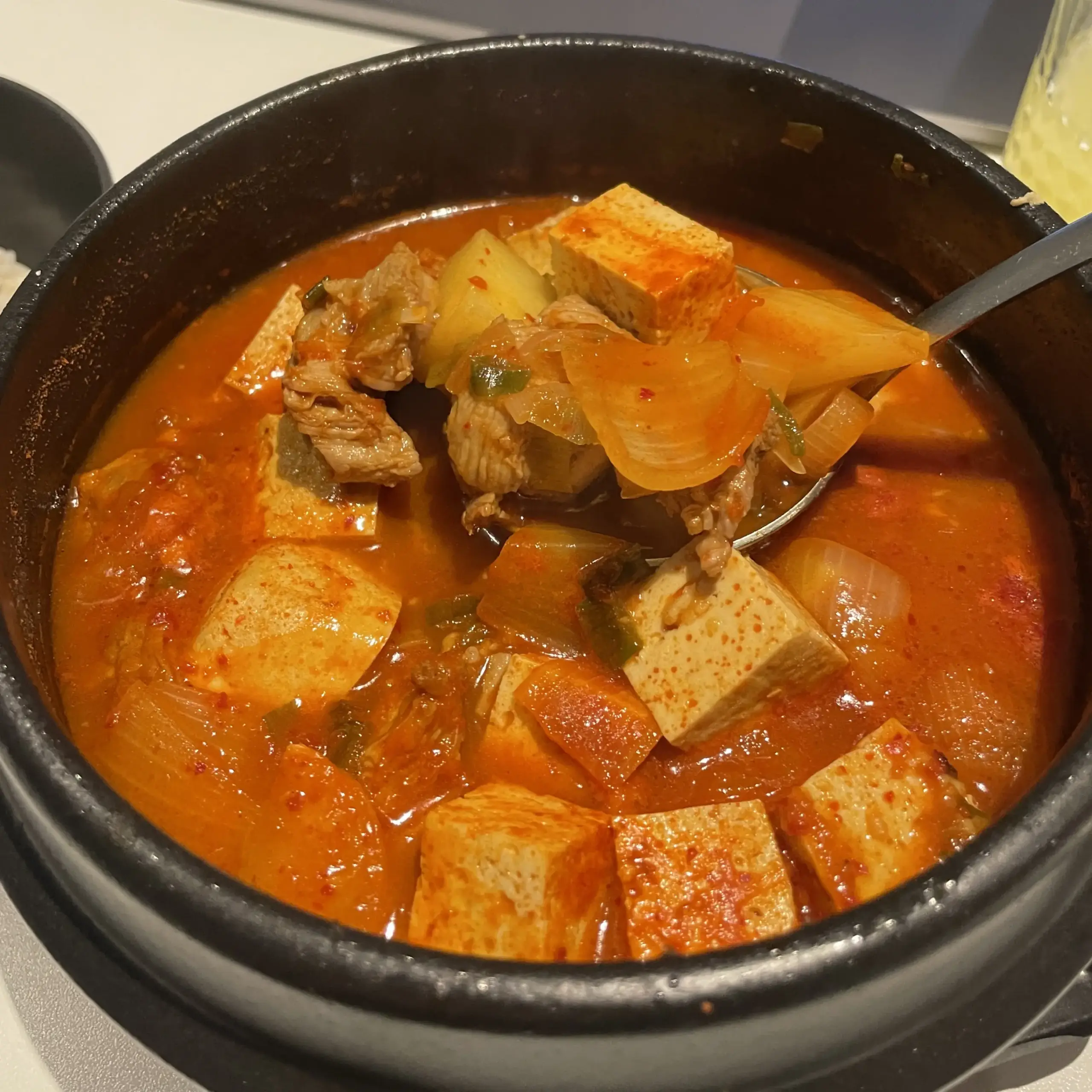
- Ingredients
The base starts with gochujang, and then green onions, garlic, onions, and zucchini are added to bring out the sweet and savory flavors. Tofu, potatoes, and mushrooms are added for texture and heartiness. Many people use pork for a deep, savory broth, while others use anchovy broth for something lighter.
- A Common Misconception
Many non-Koreans add gochujang to kimchi jjigae, but the truth is that 99% of Koreans don’t do that. In my family and among my Korean friends, at least, we never add gochujang to kimchi stew. Why? Because gochujang is so flavorful that using it in kimchi stew basically turns it into gochujang stew. The taste changes completely.
- Flavor Profile
This stew is spicy, slightly sweet from the vegetables, and deeply savory. It pairs perfectly with a bowl of rice and is especially comforting on chilly days. If you love gochujang or bold flavors, you must try this.
Sundubu Jjigae (순두부찌개)
This cozy, spicy stew is made with sundubu, which is extra-soft, silken tofu. You might be familiar with the red, spicy version, but did you know that a non-spicy white version is also served in some parts of Korea?
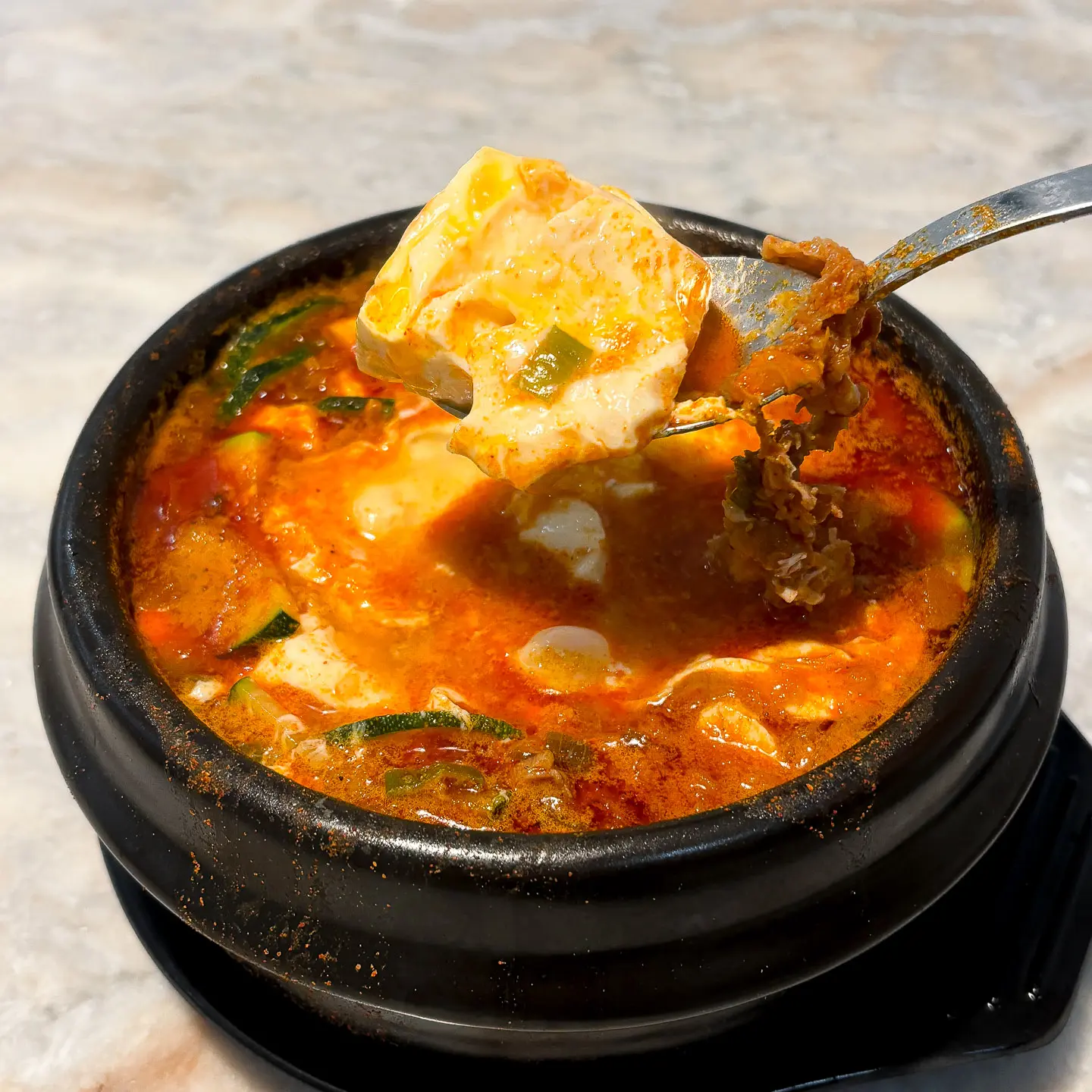
- Ingredients
The most popular version begins by stir-frying green onions, garlic, and gochugaru (Korean chili flakes) in oil to create a spicy base. Then, clams or pork are added to create a rich seafood or meat broth. Once the mixture is bubbling, sundubu is gently stirred in, along with a dash of fish sauce to enhance the umami flavor.
- Insider Tip
Have you ever tried making it at home and felt like something was missing? That deep, addictive flavor you get at Korean restaurants? Here’s the secret: MSG or Dashida (Korean soup stock powder). Yes, it’s the magic finishing touch that completes the flavor of sundubu jjigae. Many Korean restaurants use it, and honestly, the dish just doesn’t hit the same without it.
- Regional Version
In the Gangwon-do region of Korea, you can find a white, non-spicy sundubu jjigae. It’s made without chili oil and has a clean, nutty flavor that highlights the delicate taste of the tofu itself. It’s unbelievably comforting and delicious—proof that not all Korean stews need to be spicy to be satisfying.
- Recipe
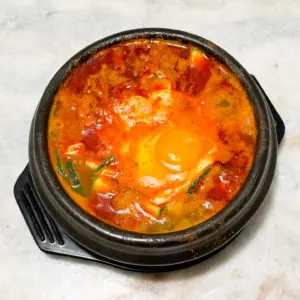
This is the most authentic sundubu jjigae recipe you’ll find.
From how to make the perfect chili oil base to secret tips for deep, rich flavor—it’s all here. You don’t want to miss this one.
Jjageuli (짜글이)
This local specialty from Cheongju is similar to gochujang stew but has a thicker, more intense flavor. This rich, savory, slightly spicy stew is made with pork and potatoes, and it’s considered a true comfort food by many Koreans.
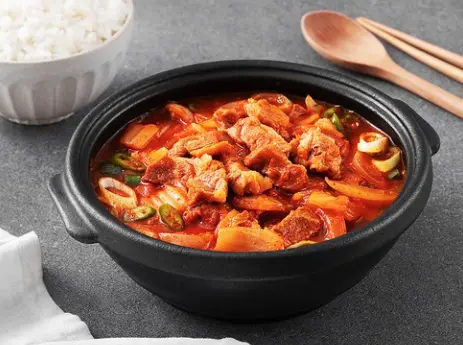
- Characteristics
Jjageuli is simmered down much more than typical stews, so it’s less soupy and more concentrated, with a bold and salty flavor. The gochujang-based broth clings to every piece of meat and potato. It’s salty enough that Koreans always eat it with rice—and often mix the rice with the stew, making it a perfect one-bowl meal. If you love thicker stews that you can scoop up with rice, this one’s a must-try.
Tofu Jjigae (두부찌개)
Tofu stew is a light, simple stew made without meat. It’s low in calories but high in protein, which makes it a popular choice for people on a diet. However, it’s not completely vegan—traditional recipes often use fermented shrimp (saeujeot) or fish sauce for added umami.
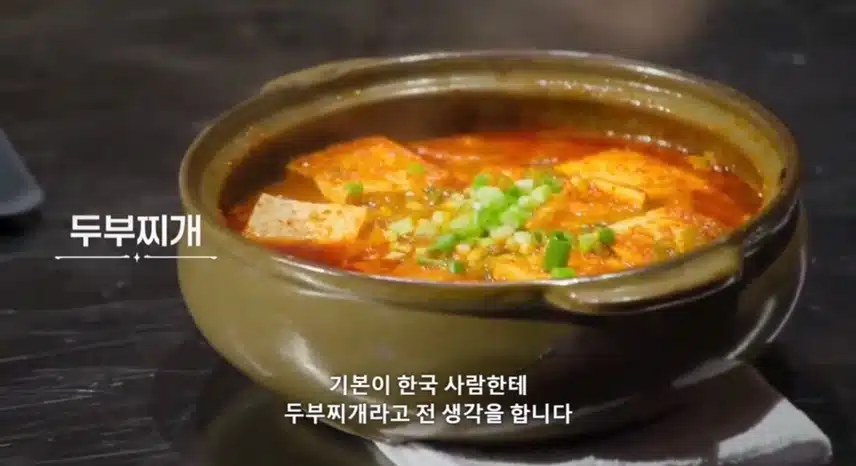
- Ingredients
The recipe is very simple. It calls for firm or soft tofu made for stews, which is firmer than sundubu (silken tofu). The broth is usually made with anchovies and kelp, but seafood broth cubes or soup stock are also often used for convenience. The seasoning is simple: gochugaru (Korean chili flakes) and minced garlic provide a warm, spicy kick.
Scoop some tofu onto a spoon with rice, dip it back into the stew, and enjoy that steaming, spicy, comforting bite. This is everyday Korean home cooking at its finest.
Cheonggukjang (청국장)
Cheonggukjang is a traditional Korean fermented soybean paste similar to doenjang, but with a stronger aroma and distinct flavor. While doenjang is made by aging dried soybean bricks (meju) in saltwater for several months, cheonggukjang is made by fermenting boiled soybeans with rice straw for just two to three days.
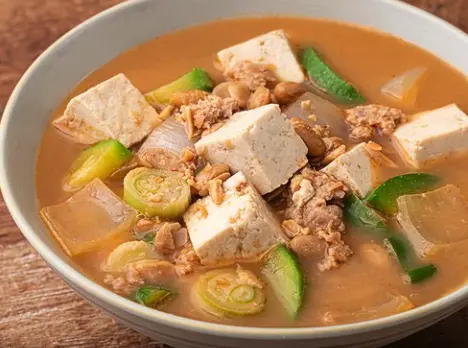
What makes cheonggukjang unique? The soybeans remain whole and sticky, similar to Japanese natto. Cheonggukjang is rich in beneficial probiotics and is known for its antibacterial and anti-cancer properties, making it one of the healthiest traditional Korean foods.
However, cheonggukjang has a very strong smell. If you are not familiar with it, you might think it smells unpleasant. In fact, it is considered one of the smelliest foods in the world. Because of this, many Koreans either love or dislike it. For older generations, though, the rich, nutty flavor and pungent aroma are deeply nostalgic, and with fewer restaurants serving it nowadays, some people truly miss the taste.
Biji Jjigae (비지찌개)
This is one of the dishes I’ve missed the most since moving to Europe. Biji(비지) is the leftover pulp after grinding soybeans and extracting the soy milk used to make tofu. Because of this, biji is rich in fiber.
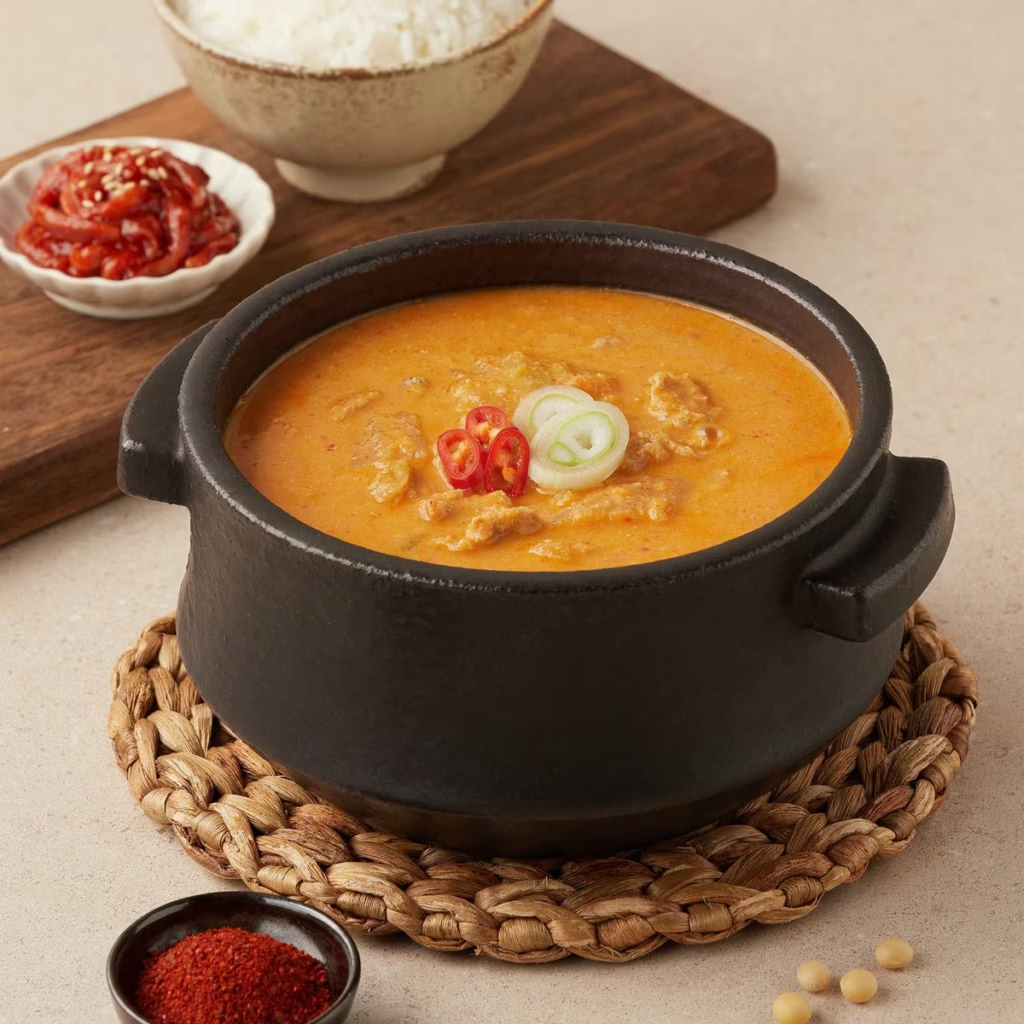
Since it’s the residue left after squeezing out the soy milk, it’s relatively low in protein. For this reason, it’s usually cooked with pork to increase its nutritional value. In the past, it wasn’t very popular because it was seen as just a filler food with little nutritional value. However, these days, it’s gaining popularity as a diet food because it’s low in calories but high in dietary fiber, which helps you feel full. A well-known Western dish that uses a similar soy pulp ingredient is falafel.
- Ingredients
Biji and finely chopped pork are cooked together with a small amount of water. Sometimes it’s made as a clear broth stew, but usually, gochugaru (Korean chili flakes) and kimchi are added to boost the umami flavor.
Aehobak Jjigae (애호박찌개)
Aehobak jjigae is a dish famous in Gwangju, Jeolla Province, but recently it has become trendy among young Koreans as well.
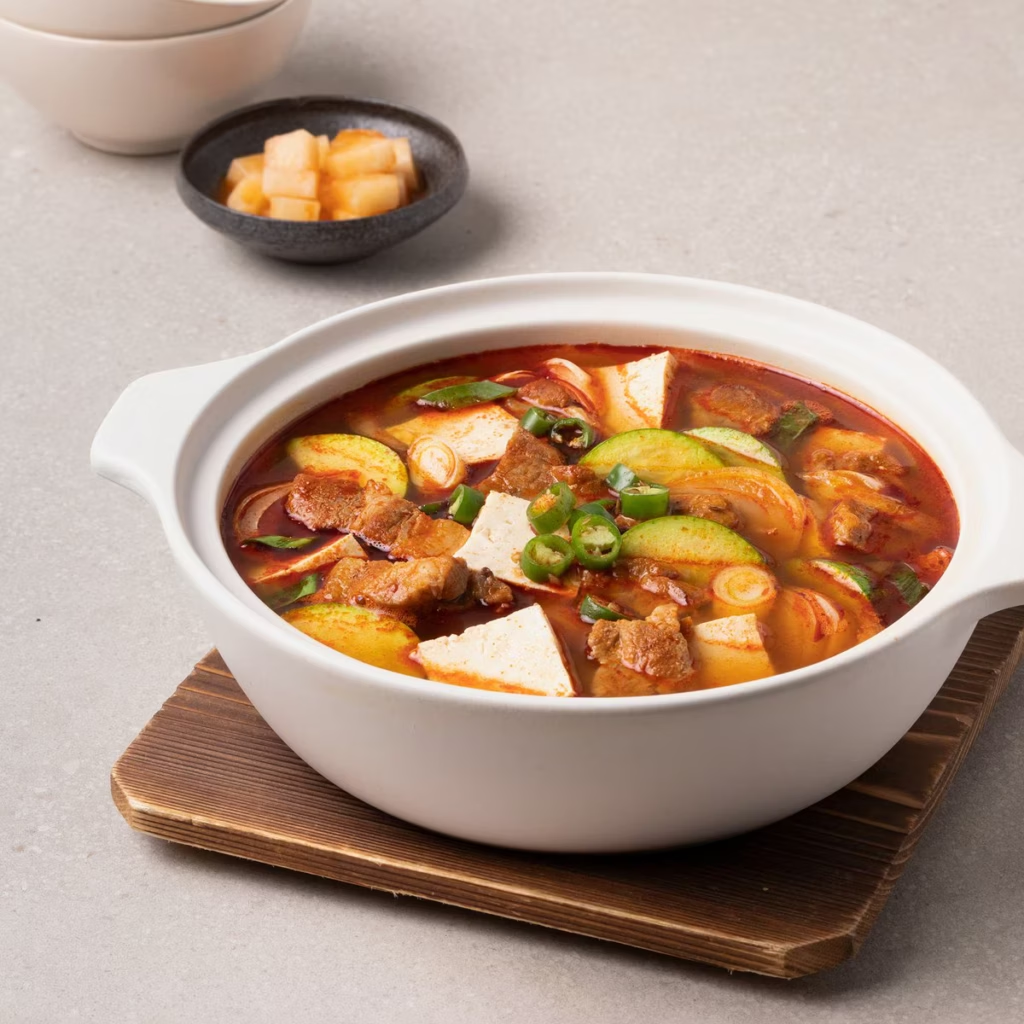
- Ingredients
The stew features Korean zucchini (aehobak) and pork as the main ingredients, cooked spicy with gochujang (red chili paste), gochugaru (chili flakes), and garlic. The seasoning is enhanced with soy sauce, salted shrimp (saeujeot), and fish sauce (aekjeot) to add depth and umami.
The natural sweetness of the zucchini and the richness of the pork fat blend smoothly with the spicy chili paste. Taking a spoonful of rice topped with zucchini and pork, dipped in the spicy broth, creates an explosion of savory flavors in your mouth.
Get Ingredients
- Ttukbaegi (clay pot, earthenware pot): https://amzn.to/4lgtPKm (US), https://amzn.to/4hWscyH (DE), https://amzn.to/3QYfftl (BE, NL), https://amzn.to/4cwh5vx (UK)

- Gochujang: https://amzn.to/3XstNFi (US), https://amzn.to/4hSoh65 (DE), https://amzn.to/4l4b2BU (NL, BE), https://amzn.to/4curibS (UK)
- Doenjang: https://amzn.to/3SjF4Vr (US), https://amzn.to/4dwp8ZA (DE), https://amzn.to/4dJKkLW (NL, BE), https://amzn.to/4dG2Ip2 (UK)
- Gochugaru (Korean Red Pepper Powder): https://amzn.to/4hD0Duw (US), https://amzn.to/40F34pK (DE), https://amzn.to/425ncTO (UK)
- Dashida: https://amzn.to/4iyh9gb (US), https://amzn.to/42AKP5y (UK), https://amzn.to/41PSmNz (NL), https://amzn.to/3RaARTg (DE)
Disclosure: Blonde Kimchi is part of the Amazon Services LLC Associates Program, an affiliate advertising program that allows websites to earn advertising fees by linking to Amazon.com and promoting products.
